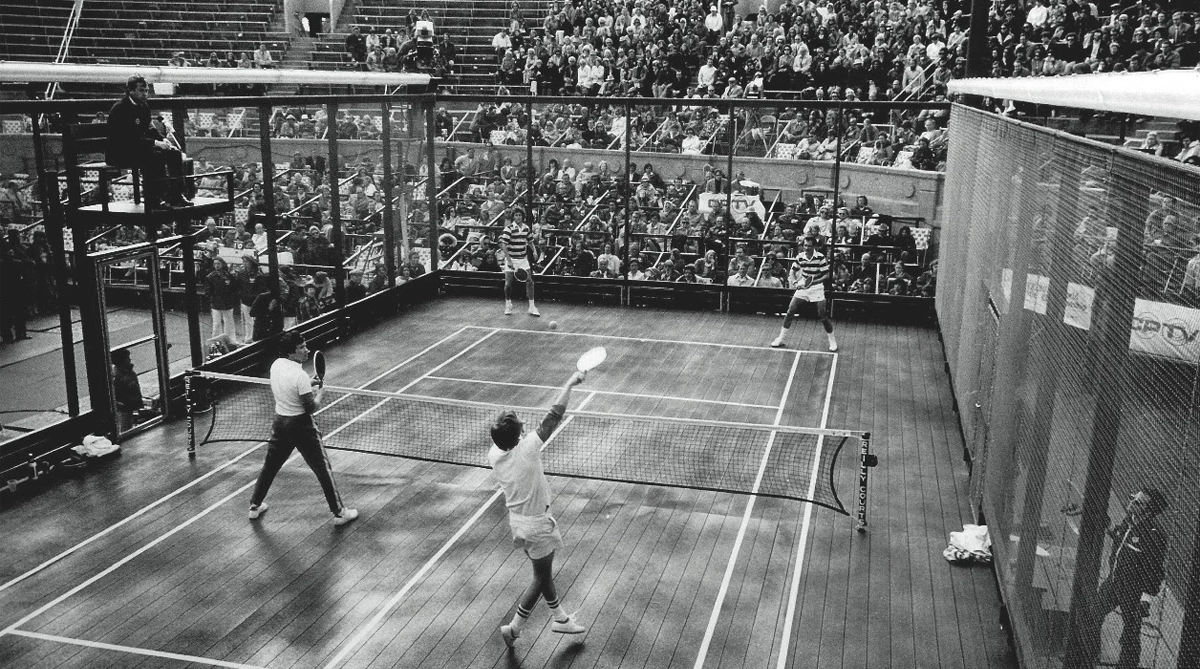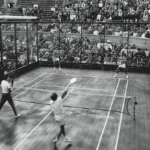Your cart is currently empty!

This article is written by: OnlyPadel Estonia
Padel’s story began in 1969 in Acapulco, Mexico, when Enrique Corcuera created a unique racquet sport by modifying a walled court, enabling gameplay similar to tennis but incorporating walls as part of the play area. The sport quickly expanded internationally after reaching Spain, where it gained popularity in the 1970s, thanks to Alfonso de Hohenlohe, who brought the concept to Marbella. From Spain, padel’s growth continued to Argentina, embedding itself as a social and competitive sport.
Expansion Across Europe and the Role of the World Padel Tour (WPT)
The World Padel Tour (WPT), founded in Spain, elevated padel into a professional arena with ranked players and international tournaments, helping padel reach new countries. Recent additions, like the P2 Padel Series, a sub-division of the WPT, offer emerging players an entry point to professional circuits and support global expansion by creating opportunities for young talents.
Popularity in the Nordics and Baltics
In the Nordics and Baltics, padel has seen impressive growth. Sweden, in particular, experienced a padel boom, with many new courts built across the country, making it one of Europe’s top markets outside Spain. Finland, Norway, and Denmark have followed suit, each developing dedicated padel clubs. The Baltics, led by Estonia and Latvia, are also embracing the sport, with new clubs and courts appearing in response to increasing demand.
Social and Accessible: The Key to Padel’s Success
Padel’s appeal lies in its social, doubles-based nature, and ease of play for various ages and skill levels. Often played recreationally but with competitive options, padel fosters a community environment, making it a popular sport among families and groups. With its rising popularity in the Nordics and Baltics and initiatives like the WPT and P2 Series, padel is well-positioned for continued growth and potential inclusion in broader competitive platforms, like the Olympics.
RECENT ARTICLES
- Padel+ avab uue padelikeskuse Tallinna ringteel asuvas Luige KeskusesUus siseväljakutega padelikeskus on Padel+ jaoks juba neljas omalaadne. 2025.… Read more: Padel+ avab uue padelikeskuse Tallinna ringteel asuvas Luige Keskuses
- CUPRA’s Strong Presence in Padel Sponsorship – Driving the Sport’s Growth WorldwideAnyone following padel in recent years has likely noticed the… Read more: CUPRA’s Strong Presence in Padel Sponsorship – Driving the Sport’s Growth Worldwide
- The Ultimate Gear of Champions: Inside the Rackets of the World’s Top 10 Padel Players for 2024With the 2024 padel season underway, the world’s top-ranked players… Read more: The Ultimate Gear of Champions: Inside the Rackets of the World’s Top 10 Padel Players for 2024
- Adidas 2024-2025 Padel Collection: Cutting-Edge Technology and New ReleasesAdidas has expanded its padel lineup for the 2024-2025 season,… Read more: Adidas 2024-2025 Padel Collection: Cutting-Edge Technology and New Releases
- OnlyPadel’s Premium Custom Padel Apparel: Tailored Performance and Style for Every PlayerAt OnlyPadel, we understand that padel players require sportswear designed… Read more: OnlyPadel’s Premium Custom Padel Apparel: Tailored Performance and Style for Every Player
- Babolat’s 2024-2025 Padel Lineup: Advanced Technology and Versatile Options for Every PlayerBabolat, a renowned name in racquet sports, has established a… Read more: Babolat’s 2024-2025 Padel Lineup: Advanced Technology and Versatile Options for Every Player
- The History and Popularity of Padel: From Mexico to the Nordics and BalticsPadel’s story began in 1969 in Acapulco, Mexico, when Enrique… Read more: The History and Popularity of Padel: From Mexico to the Nordics and Baltics
- Head Padel Rackets 2025: A Deep Dive into the New CollectionHead’s 2025 padel racket collection promises to elevate gameplay through… Read more: Head Padel Rackets 2025: A Deep Dive into the New Collection







